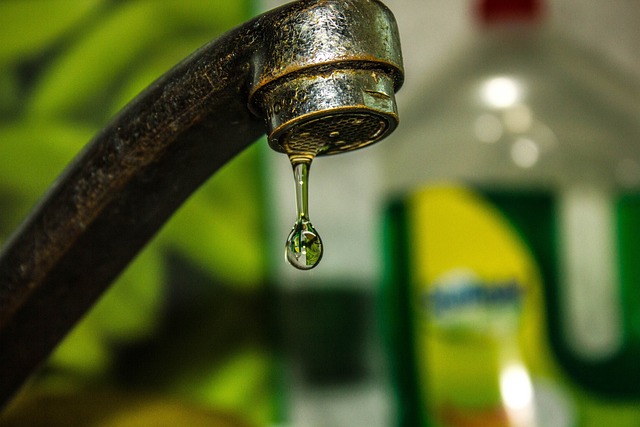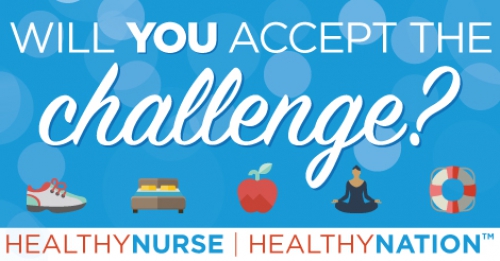Healthy Nurse, Healthy Nation™ Blog - Embrace the Earth: 4 Simple Ways to Conserve Water
Published
Water is a part of life that many Americans often take for granted. We use it for bathing, cleaning, and keeping our homes cool, sanitary, and landscaped.
The problem is that fresh water is a limited resource. Although more than 70% of the Earth’s surface is water, less than 1% of that water is usable by humans. According to the United Nations Educational, Scientific and Cultural Organization (UNESCO), 26% of the world’s population does not have safe drinking water, and up to 3 billion people experience water shortages each year.
Using less water has many benefits, including:
How You Can Conserve Water at Home
Water conservation measures taken by governments and large organizations will have the most significant global impact. But every drop counts, so it’s critical for each person or family to conserve water whenever possible.
Simple ways to conserve water — without sacrificing your current lifestyle — include:
Learn to use your water meter to help determine whether you have a leak. If you can’t locate the source, a plumber can help.
Consider replacing your:
To conserve water outside your house:
Choosing to Champion Water Efficiency at Work
Hospitals and health centers use a lot of water for building management and patient care. But when these larger facilities focus on water conservation, they can preserve fresh water, protect the environment, and save a lot of money.
As a nurse, you can encourage your organization to conserve water [PDF]:
Turning a blind eye to the need for water conservation will eventually have negative health effects, impacting hospitals and the larger community. But when nurses come together and make small changes, we can have a big impact.
What steps do you take to conserve water or protect our environment? Share with us in our discussion below.

Not a member of Healthy Nurse, Healthy Nation (HNHN) yet? Join today!
Sign up for our monthly challenges!
- Reducing energy used to filter, heat, or pump water — which in turn reduces your carbon footprint and helps the planet
- Improving water availability, which can positively impact agriculture and ecosystems
- Saving money through lower energy and water bills
How You Can Conserve Water at Home
Water conservation measures taken by governments and large organizations will have the most significant global impact. But every drop counts, so it’s critical for each person or family to conserve water whenever possible.
Simple ways to conserve water — without sacrificing your current lifestyle — include:
- Stop leaks
- Faucets
- Outdoor spigots
- Sprinkler systems
Learn to use your water meter to help determine whether you have a leak. If you can’t locate the source, a plumber can help.
- Upgrade equipment in your home
Consider replacing your:
- Toilets: Toilets account for 30% of the water used in most homes, according to the United States Environmental Protection Agency (EPA). While older toilets use up to 6 gallons of water with each flush, newer models average 1.28 gallons per flush. Updating to more efficient toilets can reduce your family’s water use by up to 60%. Look for the “WaterSense” label, which means a product meets EPA criteria.
- Washing machines and other appliances: Laundering clothes is the second-highest use of water in most homes, after toilets. To conserve fresh water, swap your washing machine and other water-using appliances, like the dishwasher, for Energy Star-certified products. They’ll reduce the amount of water and energy you’re using.
- Shower heads and faucet aerators: Changing your shower heads and faucet aerators — the small round screen on your faucet that adds air to the water stream — can reduce the water coming out without changing the pressure you feel. Water-saving sink faucets and aerators with the WaterSense label can reduce water flow by 30%. With these newer shower heads, the average family uses 2,700 fewer gallons of water yearly.
- Limit water use in your yard
To conserve water outside your house:
- Consider your landscape design: The EPA’s landscaping tips can help you plan an outdoor area that fits your life and is water-smart. For example, the plants you choose determine how much water you need to keep things healthy. Plants suitable for your climate and native to your area can stay healthy with your region’s typical rainfall and temperatures, requiring much less water to maintain. If you’re putting in a new landscape, consider xeriscaping — a landscape design that significantly reduces or completely removes the need for irrigation. Xeriscape designs include the creative use of rocks and drought-tolerant plants.
- Water wisely: For plants and vegetation that require water, make water-friendly choices:
- Choose a smart irrigation system that syncs to weather and landscape conditions to avoid overwatering (a common problem with automatic sprinkler systems).
- Collect and use rainwater for watering.
- Leave grass slightly longer so blades shade each other and retain water better.
- Mulch around plants to reduce evaporation by as much as 75%.
- Water only in the early morning or evening to reduce evaporation.
- Plant a rain garden in a sunken part of your yard that relies on rainwater and helps replenish groundwater.
- Use a drip hose or automatic shut-off nozzle to lessen water waste.
- Water houseplants with half-empty water bottles or leftover water from your pet’s bowl.
- Limit leisurely water waste: Pools and water toys are a great way to cool off. But you can take steps to limit the water used:
- Avoid toys that involve continuous running water.
- Cover the pool when not in use to limit evaporation (and the need to refill).
- Use a water- and energy-efficient pool filtration system.
- Make conserving water a habit
- Keep a pitcher of water in the fridge instead of waiting for the tap to turn cold.
- Limit the time you spend in the shower or turn off the water while you’re soaping up or shaving.
- Don’t turn the faucet on full blast unless you need the pressure.
- Scrape — don’t rinse — dishes before loading the dishwasher.
- Turn off the water when brushing your teeth.
- Wait until you have a full load to run the washing machine or dishwasher.
Choosing to Champion Water Efficiency at Work
Hospitals and health centers use a lot of water for building management and patient care. But when these larger facilities focus on water conservation, they can preserve fresh water, protect the environment, and save a lot of money.
As a nurse, you can encourage your organization to conserve water [PDF]:
- Advocate for a water audit
- Fundraise or lobby for updated, efficient toilets, faucets, and showerheads
- Report leaky fixtures
- Join your organization’s Green Team
Turning a blind eye to the need for water conservation will eventually have negative health effects, impacting hospitals and the larger community. But when nurses come together and make small changes, we can have a big impact.
What steps do you take to conserve water or protect our environment? Share with us in our discussion below.

Not a member of Healthy Nurse, Healthy Nation (HNHN) yet? Join today!
Sign up for our monthly challenges!
Blog Quality of Life
04/02/2024 9:17am CDT



Post a Comment or Question